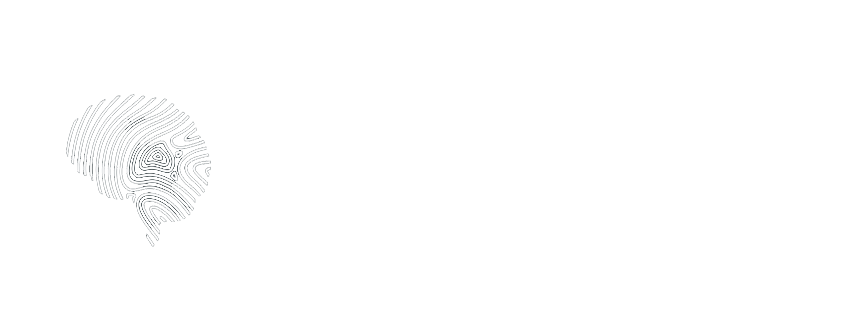The “Seven Es of Strategic Therapy” model provides a comprehensive framework for psychotherapists to guide their work with clients. This model outlines a strategic approach to therapy, emphasising key stages that facilitate effective treatment and lasting change. Let’s delve deeper into each stage:
-
EVALUATE
The evaluation stage is the crucial first step in the therapeutic process. It serves as a gateway, determining whether the therapist can effectively work with the client and whether the client is ready and suitable for therapy.
During this stage, the therapist assesses:- The client’s presenting issues: This involves thoroughly exploring the problems that have brought the client to therapy. The therapist gathers information about the nature, severity, and duration of the issues.
- The client’s readiness for change: Not all individuals who seek therapy are equally prepared to engage in the challenging work of personal change. The therapist evaluates the client’s motivation, willingness to explore difficult topics, and commitment to the therapeutic process.
- Potential risks or contraindications: The therapist screens for any factors that might make therapy inadvisable or potentially harmful. This could include severe mental health conditions that require more intensive treatment, active substance abuse, or acute crisis situations that need immediate intervention.
- The therapist’s own competence: Ethical practice requires therapists to work within their areas of competence. During evaluation, the therapist considers whether they have the necessary skills, experience, and knowledge to effectively treat the client’s specific issues.
- Ethical considerations: The therapist checks for any potential conflicts of interest or ethical dilemmas that could compromise the therapeutic relationship.
This stage may take one or more sessions and often involves structured clinical interviews, standardised assessments, and careful observation. The goal is to ensure that therapy is both appropriate and potentially beneficial for the client.
-
ESTABLISH
Once the evaluation confirms that therapy can proceed, the next stage focuses on establishing the framework for treatment. This stage is about clarifying expectations, setting goals, and building the therapeutic alliance.
Key aspects of this stage include:- Clarifying the WHAT: The therapist and client collaboratively identify and prioritise the specific issues to be addressed in therapy. This might include symptoms to be reduced, behaviours to be changed, or goals to be achieved.
- Determining the HOW: The therapist explains their proposed approach to treatment, including the theoretical orientation (e.g., cognitive-behavioural, psychodynamic, humanistic) and specific techniques that might be used. The client’s preferences and past experiences with therapy are taken into account.
- Agreeing on the WHEN: This involves setting the frequency and duration of sessions, as well as establishing an estimated timeline for treatment. While this may need to be adjusted as therapy progresses, having an initial framework helps set expectations.
- Deciding on the WHERE: The setting for therapy is determined, whether it’s in-person sessions in an office, online video sessions, or a combination. The pros and cons of each option are discussed.
- Exploring the WHY: The therapist helps the client delve deeper into their motivations for seeking change. Understanding the underlying reasons can enhance motivation and inform treatment planning.
This stage also involves psychoeducation, where the therapist provides information about the client’s condition, the process of therapy, and what to expect. The therapist works to normalize the client’s experiences, reducing shame or stigma that might be associated with their problems.
-
EDUCATE
The education stage is where the therapist begins to equip the client with new tools, perspectives, and skills to address their issues. This stage is crucial for empowering the client and laying the groundwork for change.
Key components of this stage include:- Introducing new cognitive approaches: The therapist teaches the client to identify, evaluate, and modify unhelpful thought patterns. This might involve techniques from cognitive-behavioural therapy, such as cognitive restructuring or reframing.
- Building new skills: The client learns practical strategies for managing emotions, improving relationships, solving problems, or coping with specific symptoms. This could include relaxation techniques, communication skills, or mindfulness practices.
- Promoting “cognagility”: This concept refers to cognitive flexibility – the ability to adapt one’s thinking to different situations. The therapist helps the client develop more flexible and adaptive thought processes.
- Developing resilience: The client learns strategies to bounce back from adversity and maintain psychological well-being in the face of challenges.
- Teaching compartmentalisation: This skill involves mentally separating different aspects of life, which can be helpful for managing stress and maintaining focus.
- Inoculation: The therapist prepares the client for potential future challenges by anticipating difficulties and rehearsing coping strategies.
- Contextualisation: The client’s issues are explored within the broader context of their life experiences, relationships, and environment. This helps provide a more comprehensive understanding of the problems and potential solutions.
-
EVOKE
The evocation stage involves accessing and activating the client’s internal resources, as well as processing difficult experiences or emotions.
This stage includes:- Identifying internal resources: The therapist helps the client recognise their strengths, positive qualities, and past successes. These can serve as powerful tools for change.
- Activating resources: Once identified, these internal resources are actively incorporated into the therapy process. The client is encouraged to draw upon their strengths to face current challenges.
- Reprocessing experiences: For clients dealing with trauma or deeply distressing experiences, this stage might involve techniques to safely revisit and reprocess these events. This could include methods like EMDR (Eye Movement Desensitization and Reprocessing) or narrative exposure therapy.
- Emotional processing: The therapist creates a safe space for the client to experience and express emotions that may have been suppressed or avoided. This can lead to emotional release and new insights.
-
ERADICATE
The eradication stage focuses on actively reducing or eliminating the client’s symptoms and problematic behaviours. While complete eradication may not always be possible or necessary, the goal is significant symptom reduction.
This stage involves:- Targeted interventions: The therapist implements specific techniques or exercises to address the client’s particular symptoms or issues.
- Coping strategies: The client learns and practices strategies to manage any remaining symptoms effectively.
- Addressing maintaining factors: The therapist helps the client identify and modify factors in their environment or behaviour that might maintain their problems.
- Monitoring progress: Regular assessment of symptom severity helps track progress and adjust the treatment plan as needed.
-
ENSCONCE
The ensconcing stage is about consolidating gains and fostering deeper personal growth. It moves beyond symptom reduction to help the client develop a more fulfilling and meaningful life.
Key aspects include:- Creating new meaning: The therapist helps the client find new perspectives on their experiences, often transforming challenges into opportunities for growth.
- Enhancing self-awareness: The client gains deeper insight into their patterns of thinking, feeling, and behaving, as well as their values and life goals.
- Facilitating post-traumatic growth: For clients who have experienced trauma, this stage focuses on how they can grow and find new strength as a result of their experiences.
- Immunization: The therapist helps the client prepare for potential future challenges, building confidence in their ability to handle difficulties.
-
EXIT
The final stage involves bringing the therapy to a close in a way that reinforces progress and prepares the client for continued growth.
This stage includes:- Reviewing progress: The therapist and client reflect on the journey of therapy, acknowledging changes and achievements.
- Addressing remaining concerns: Discuss and address any lingering issues or worries about ending therapy.
- Relapse prevention: A plan is developed to maintain gains and handle potential setbacks after therapy ends.
- Future orientation: The client is encouraged to set goals for continued personal growth beyond therapy.
- Closure: The therapeutic relationship is acknowledged and appropriately terminated.
Concluding Thoughts
Overall, the “Seven Es of Strategic Therapy” model provides a comprehensive roadmap for the therapeutic process. It emphasises a strategic, goal-oriented approach while allowing flexibility to meet each client’s unique needs. The model integrates elements from various therapeutic approaches, including cognitive-behavioural therapy, psychodynamic insights, and positive psychology.
By following this model, therapists can ensure they address all crucial aspects of the therapeutic process. It begins with careful evaluation and goal-setting, moves through active intervention and skill-building, and concludes with consolidation of gains and preparation for life after therapy. Throughout the process, there’s an emphasis on client empowerment, building on strengths, and fostering resilience.
The model also recognises that therapy is not just about reducing symptoms but about promoting overall well-being and personal growth. It aims to help clients not only overcome their immediate problems but also develop the skills and insights they need to lead more fulfilling lives in the long term.
While the stages are presented sequentially, in practice they may overlap or be revisited as needed. The therapist must use clinical judgment to determine how to best apply the model with each unique client.


